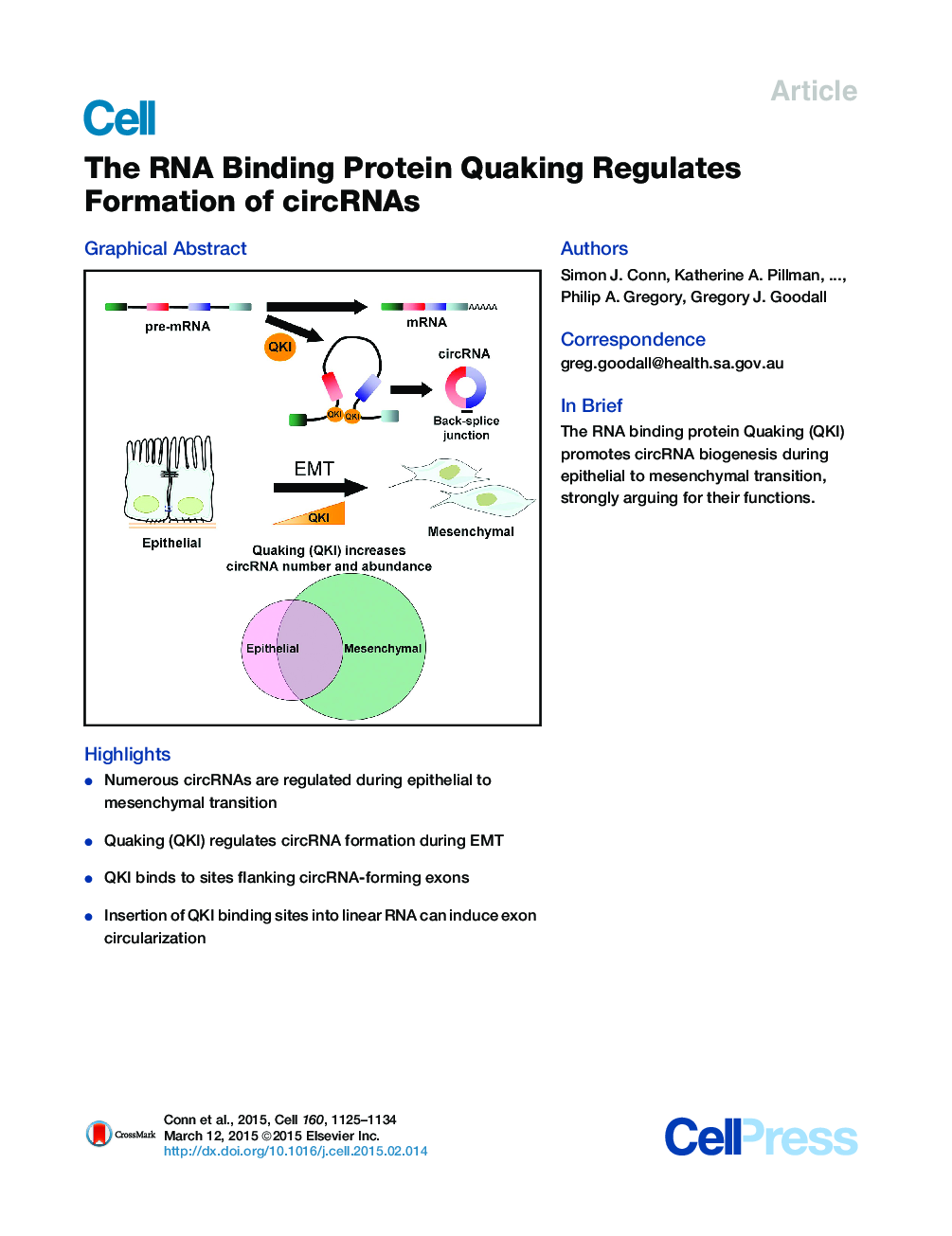| Article ID | Journal | Published Year | Pages | File Type |
|---|---|---|---|---|
| 2035345 | Cell | 2015 | 10 Pages |
•Numerous circRNAs are regulated during epithelial to mesenchymal transition•Quaking (QKI) regulates circRNA formation during EMT•QKI binds to sites flanking circRNA-forming exons•Insertion of QKI binding sites into linear RNA can induce exon circularization
SummaryCircular RNAs (circRNAs), formed by non-sequential back-splicing of pre-mRNA transcripts, are a widespread form of non-coding RNA in animal cells. However, it is unclear whether the majority of circRNAs represent splicing by-products without function or are produced in a regulated manner to carry out specific cellular functions. We show that hundreds of circRNAs are regulated during human epithelial-mesenchymal transition (EMT) and find that the production of over one-third of abundant circRNAs is dynamically regulated by the alternative splicing factor, Quaking (QKI), which itself is regulated during EMT. Furthermore, by modulating QKI levels, we show the effect on circRNA abundance is dependent on intronic QKI binding motifs. Critically, the addition of QKI motifs is sufficient to induce de novo circRNA formation from transcripts that are normally linearly spliced. These findings demonstrate circRNAs are both purposefully synthesized and regulated by cell-type specific mechanisms, suggesting they play specific biological roles in EMT.
Graphical AbstractFigure optionsDownload full-size imageDownload high-quality image (141 K)Download as PowerPoint slide
